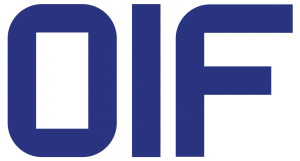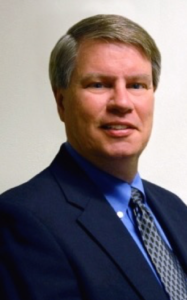OIF Initiates New CEI-112G-XSR Project for D2D/D2OE Common Electrical Interface, Addresses Multiple Chip Integration
Forum continues efforts to support new and evolving architectures by defining a range of electrical interfaces which enable optimized system design for power, cost and packaging
Fremont, Calif.—June 12, 2018 – The OIF (Optical Internetworking Forum) today announced the launch of the CEI-112G-XSR project for Die-to-Die (D2D) and Die-to-Optical Engine (D2OE) Common Electrical Interface at the Q218 Technical and MA&E Committees meeting held April 24-26, 2018 in Nuremberg, Germany. The project aims at enabling intra-package interconnects to optical engines or between dies with high throughput density and low normalized power operating in the data rate range of 72-116 Gbps with a reach up to 50 mm.
In addition to the already existing CEI-112G-MCM OIF project, which is dedicated to wide, high bandwidth CMOS-to-CMOS interconnects, the new CEI-112G-XSR project proposes to support technology mix, in particular CMOS-to-SiGe (Silicon Germanium), which is frequently used to build optical engines. System-in-package (SIP) leads to a requirement of supporting up to 50 mm trace length between the multiple chips on a common (organic) package substrate.
“We jointly designed this project to address the problem of integrating multiple dies, including driver devices for optical engines on non-CMOS technologies, onto a common substrate within a large multi-chip-package design. Supporting this mix of technology allows combining the high logic density of CMOS devices with the high drive strength of analog components,” explained Klaus-Holger Otto of Nokia and OIF Technical Committee Chair.
The working group for the CEI-112G-XSR project has identified the following benefits for OIF members:
- Allow lower normalized power, double shoreline throughput density and provide a multi-source 72-116 Gbps D2D and D2OE electrical I/O interface. This will enhance the integration, normalized power reduction, and cost reduction for integrated OE, multiple-die SIPs.
- Enable 1 to N lanes of 72-116 Gbps electrical I/Os (e.g. on ASIC/FPGA/OE).
OIF Day at Nokia
Following the quarterly meeting, a sizeable group of OIF members participated in an OIF Day event at the Nokia Nuremberg facility on April 27, 2018. The OIF Day Program is a live educational workshop program to expand awareness of, and educate member company employees on the work of the OIF. The OIF Day event is conducted at network operator and/or vendor sites to reach and obtain inputs from a range of support functions, e.g. operations, network planning, network management, marketing, etc. It is custom-tailored to the needs of each hosting company and comprised of general sessions and tracks focused on Networking and/or Physical and Link Layer topics.
OIF Transport-API for Transport SDN Survey
OIF also recently conducted a survey of OIF members and non-members, including network operators and vendors, on the OIF’s proposed certification project for Transport-API (T-API) for Transport SDN. Nearly 30 responses to the survey were received – 20+ from network operators and 9 from vendors. The OIF will consider the feedback in any proposal to expand the current program to include T-API certification.
About the OIF
The OIF facilitates the development and deployment of interoperable networking solutions and services. Members collaborate to drive Implementation Agreements (IAs) and interoperability demonstrations to accelerate and maximize market adoption of advanced internetworking technologies. OIF work applies to optical and electrical interconnects, optical component and network processing technologies, and to network control and operations including software defined networks and network function virtualization. The OIF actively supports and extends the work of national and international standards bodies. Launched in 1998, the OIF is the only industry group uniting representatives from across the spectrum of networking, including many of the world’s leading service providers, system vendors, component manufacturers, software and testing vendors. Information on the OIF can be found at http://www.oiforum.com
PR Contact:
Leah Wilkinson
Wilkinson + Associates for the OIF
Email: leah@wilkinson.associates
Office: 703-907-0010

 “The most important thing for everyone is power consumption on the line card”
“The most important thing for everyone is power consumption on the line card”